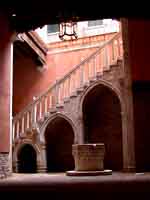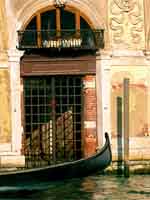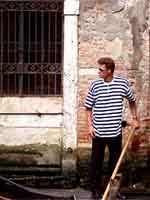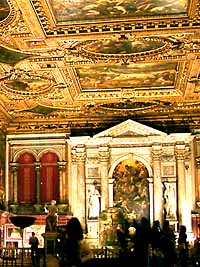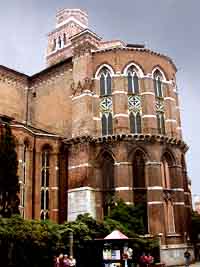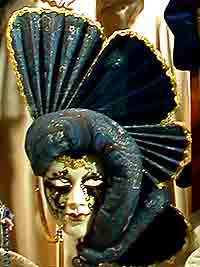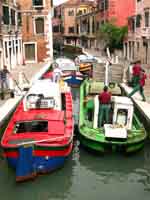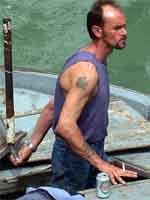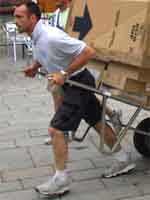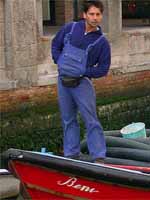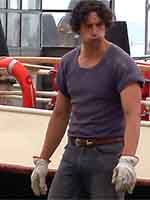Tuesday 28 May: La Scuola Grande di San Rocco

After cappuccino at Gino's, we headed to the San Polo sestiere under more cloudy skies. The
Casa Goldoni was the birthplace of Carlo Goldoni, an 18th century playwright. He was
instrumental in the reform of the Commedia dell'Arte by writing plays for the artists to
perform rather than allowing them to follow their improvisational whims as before. His
house is now used as a museum (period costumes, a model theater, and marionettes) and as
an institute of dramatic studies.
Because androni often flooded during periods of aque alte (high waters), the reception floor was above the androne and was called the piano nobile or porteggo.
In her ghoulish short story, "The Bravest Rat in Venice," Patricia Highsmith, author of The Talented Mr. Ripley, paints a memorably disgusting picture of children playing in an androne flooded by the Rio San Polo.
Many palazzi have been subdivided and updated to include apartments at the androne level. The doors to the canal have been protected against flooding and rats (see the photograph on the right).
The Scuola, by the way, has nothing to do with a school. The term is derived from Latin and means corporation, or guild. There have been many throughout Venetian history, a few being designated as grand. The scuole were corporations that combined charitable and mutual assistance among the members. Some were connected to professions. By joining together many of the lower orders of society (merchants, artisans, state workers, doctors), the scuole greatly influenced the affairs of the state. The patricians may have ruled the republic, but the wealth of the members of the scuole gave the middle and lower classes a strong voice in the society as a whole. Generally, the first floor of the scuola was designated for the religious or charitable functions, while the second floor was used as meeting places. These were often highly decorated halls, sometimes ostentatious but more often exquisitely beautiful. The meeting halls and the exteriors of the buildings became symbols of the prosperity, influence and civic status of the guilds.
We had lunch at Trattoria San Toma nearby. We were seated on a leafy patio which, because of the threat of rain, was covered by a canvas awning. At first we were the only customers, but soon four Japanese ladies arrived. They had a lively conversation with the waiter who seemed to know only one Japanese word, but he used it a lot. Soon a German family was seated behind us and the waiter took their order in German. Then a French group came in and the waiter spoke French as he served them. The sounds of various cultures accompanying the meal made it one of our most enjoyable.
Venice is served entirely by water. Every shop, every restaurant, every hotel receives its wares via boat. And every bit of trash or refuse is removed by boat. Those who operate the many types of boats on the canals work together to make the city run efficiently. Yet, they seldom get a second look by the visitor.
Photo Album: A City of Heavy Lifting
